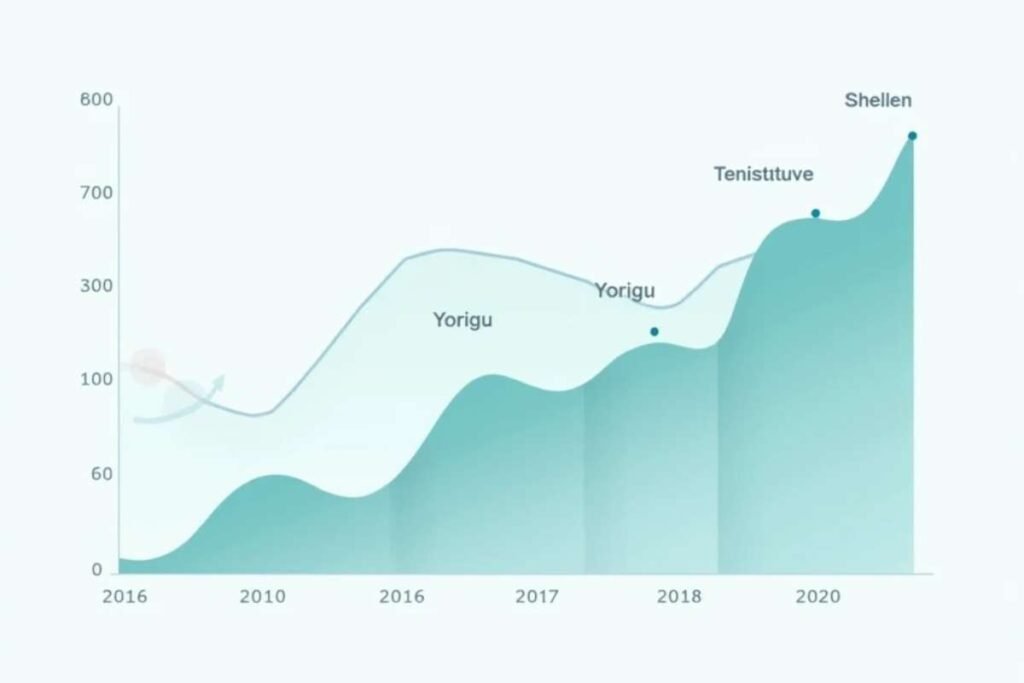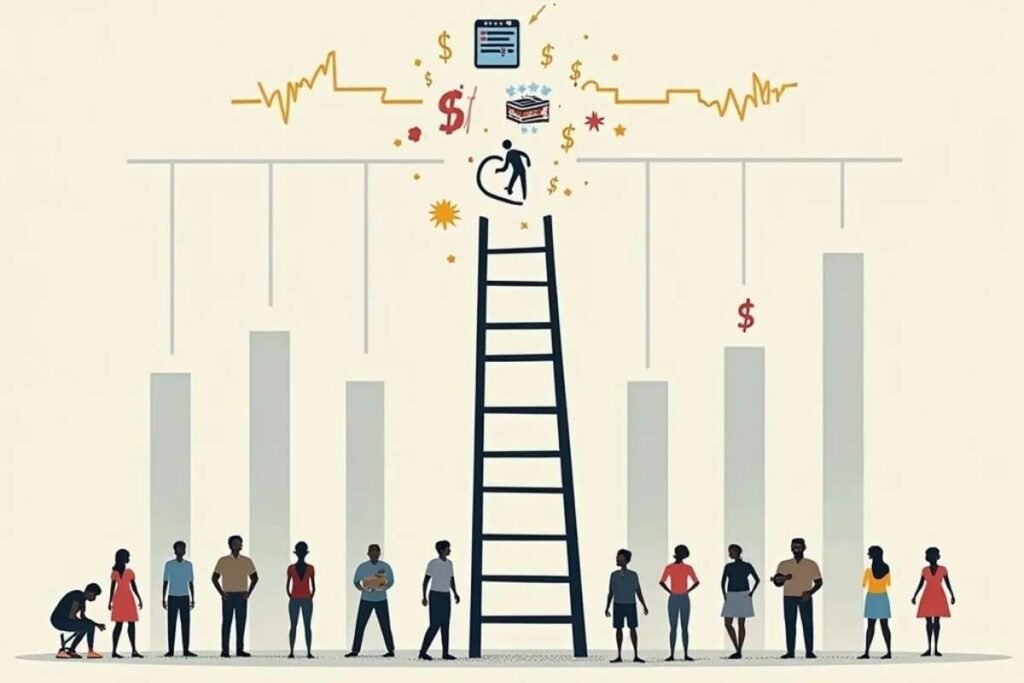In today world of growing economic complexity inequality is more than just a buzzword but it is a reality felt across countries, communities and even households.
At the heart of this conversation is Giniä a term inspired by the Gini coefficient that helps us visualize and understand the uneven spread of wealth and income.
That is where Giniä comes in a lens to view, question and decode the fairness of our economic systems. In this article we break down what it really means, how it works and why it matters more now than ever before.
What is Giniä?

Giniä is a statistical measure that represents income or wealth inequality within a population. It stems from the Gini coefficient a core concept in economics used to assess how evenly resources are distributed.
The scale ranges from 0 perfect equality to 1 extreme inequality. In simple terms it reveals whether income is fairly shared or mostly held by a few.
It is widely used in economic analysis and policymaking to evaluate social equity and highlight regions or groups where disparities are most severe.
The Basics Behind Giniä!
At its core it is a measure of how income is distributed across a society. It is based on the Gini coefficient which ranges from 0 to 1.
A score of 0 means income is equally divided among everyone. A score closer to 1 shows that most of the wealth is concentrated in the hands of a few.
This scale offers a clear picture of the economic divide, allowing researchers and analysts to track trends in wealth distribution, income inequality and financial equity over time.
How is it calculated?
It is calculated using the Lorenz curve which plots the percentage of total income earned by different portions of the population.
The farther this curve bends away from the diagonal representing perfect equality the higher the inequality. The difference between the curve and the diagonal is used to compute the Gini ratio.
This method helps turn raw income statistics into understandable visuals that explain real world inequality in simple terms.
Why is it Used in Economic Analysis?
Economists and policy experts rely on Giniä as a tool to monitor economic health, evaluate household income data and guide important decisions around public policy.
It helps determine where and how income gaps are growing. It also reveals patterns in resource allocation and highlights whether an economy is serving its full population or just a select few.
Without this type of measurement inequality would remain hidden in plain sight. it brings transparency to the disparities shaping societies and prompts timely action.
Giniä and Income Distribution Patterns!
It is most clearly applied when studying income distribution as it reveals how money flows across different socioeconomic groups.
It helps determine whether individuals in the lower and middle income brackets are progressing or falling behind. As wages shift, job opportunities evolve and asset ownership changes it provides the statistical foundation to understand how the wealth gap between groups is growing or narrowing.
This analysis goes beyond financial figures it speaks to the very structure of society. These insights help governments, researchers and activists develop strategies aimed at fostering economic balance and greater social inclusion.
Connecting it to Social Equity!

It plays a key role in the broader conversation about social equity. High inequality often signals problems with access to education, healthcare and employment opportunities.
It shows how social stratification consistently keeps certain populations at a disadvantage, while others steadily accumulate more wealth over time.
When it increases it is usually a sign that systems are not working fairly and that policy adjustments may be needed to restore balance.
Income Inequality in the Labor Market!
Within the labor market it is useful for identifying wage disparities across industries and roles. It brings attention to how labor dynamics influence income thresholds, job security and financial stability.
It also highlights gaps in earnings between different sectors clearly revealing where certain workers are being consistently undervalued or overlooked.
With the rise of contract work and gig based jobs this kind of analysis has become even more important in understanding today employment realities.
The Role of it in Wealth Accumulation Studies!
It is not limited to income. It also applies to how people accumulate wealth through property, investments or inheritance.
This is where wealth inequality becomes visible especially when fewer people begin to control a significantly larger share of assets.
Over time this kind of imbalance can affect access to opportunity, financial security and social power. Giniä helps track these trends so societies can better understand how fortunes are built and who gets left out.
How Giniä Supports Social Policy Design?
When governments plan budgets or design social policies it provides valuable insight. It helps shape decisions about taxation, subsidies and redistribution efforts.
By showing where inequality is rising it allows for better targeting of public finance tools. Policymakers use this data to improve social welfare, reduce poverty and expand access to essential services.
Without tools like it many of these decisions would rely more on assumption than fact leaving policymakers blind to actual economic inequality and trends.
Socioeconomic Research!

Academic studies often rely on Giniä to reliably measure the impact of economic systems on different population groups and social class divisions.
In quantitative research it is used alongside other metrics to examine trends in demographic inequality, income volatility and socioeconomic status.
Researchers explore how different factors like gender, race or geography influence a person financial position. It supports this work by offering a clear standardized way to compare inequality across different contexts.
The Importance of Giniä in Economic Modeling!
In economic modeling, it helps simulate the effects of various policy changes on income distribution, household dynamics and long term fiscal outcomes.
It is a part of development indicators that assess how different strategies such as increasing the minimum wage or reforming tax codes might affect inequality.
By including Giniä in models economists can predict the socioeconomic impact of proposed legislation giving decision makers a deeper understanding of possible outcomes.
Data Visualization!
Visual data is one of the best ways to communicate complex issues and it excels in this area. Through charts and graphs it clearly illustrates the size and shape of inequality.
These visual tools make it accessible to a wide audience, from policymakers and academics to the general public and students alike.
Whether used in media reports or community presentations they transform abstract data into relatable, visual and real world insight.
Giniä Role in Tracking Inequality Trends!
Over time it has become essential in monitoring inequality trends. It does not just provide a one time snapshot but it tracks how income and wealth move across society year after year.
By analyzing long term shifts, economists and researchers can identify patterns that signal deepening divides or improvements in fairness.
These trends guide long-term planning in areas like community development, education funding and employment reform.
What it Reveals About Financial Empowerment?
Financial empowerment begins with access to education, income and decision making. It exposes how uneven that access really is.
In places where the gap is wide, people are less able to move out of poverty, build social capital or change their circumstances.
Understanding this metric helps identify which groups need more support to participate fully in the economy. It then becomes part of the conversation about empowerment and equity.
A Tool for Grounded Economic Justice!
At its heart it is not about perfection it is about fairness. It gives economists, activists and citizens a language to talk about inequality in a grounded, meaningful way.
By focusing on real numbers instead of vague impressions it helps make a case for economic justice that is based on facts not ideology.
Whether used in research or real world decision making it adds weight to the push for fairer outcomes across all layers of society.
How You Can Be Part of the Solution?

Giniä is not just an economic term, but it is a powerful reflection of how society distributes opportunity, wealth, resources, and long-term financial stability
Understanding this tool can empower you to think critically about fairness, question broken systems, demand better and advocate for lasting change.
Whether you are a student, policymaker, creator or citizen, your awareness matters. Explore the numbers, challenge inequality where you see it and support policies that promote balance. Because real change starts with informed minds and action that follows.
Conclusion
Giniä is more than a number. It is a way to understand the structure of society but who has access to resources and who does not.
By highlighting patterns of inequality it encourages deeper conversations about fairness, justice, opportunity, social progress and inclusive economic growth.
Whether applied in research, policy or public awareness Giniä remains a vital tool for examining the health of any economy. Understanding it is the first step in working toward a system that works for everyone but not just a few.
FAQs
What is Giniä?
It is a measure of income and wealth inequality based on the Gini coefficient. It shows how evenly or unevenly income is shared across a population.
How is it calculated?
It is calculated using the Lorenz curve and measures the gap between equal and actual income distribution. The result is a number between 0 and 1.
Why is it important?
It is important because it provides a clear data driven way to understand economic inequality, helping guide policy and assess fairness in wealth distribution.
What does a high Gini coefficient mean?
A high Gini score indicates greater inequality, meaning wealth or income is concentrated in the hands of fewer people.
Can it measure wealth as well as income?
Yes. Although it is most often used for income it can also apply to assets, property and overall wealth to reflect broader economic disparities.
How is it used in policy making?
Governments use Giniä to assess the impact of taxes, social programs, and budget decisions on inequality and to design better strategies for fair distribution.




